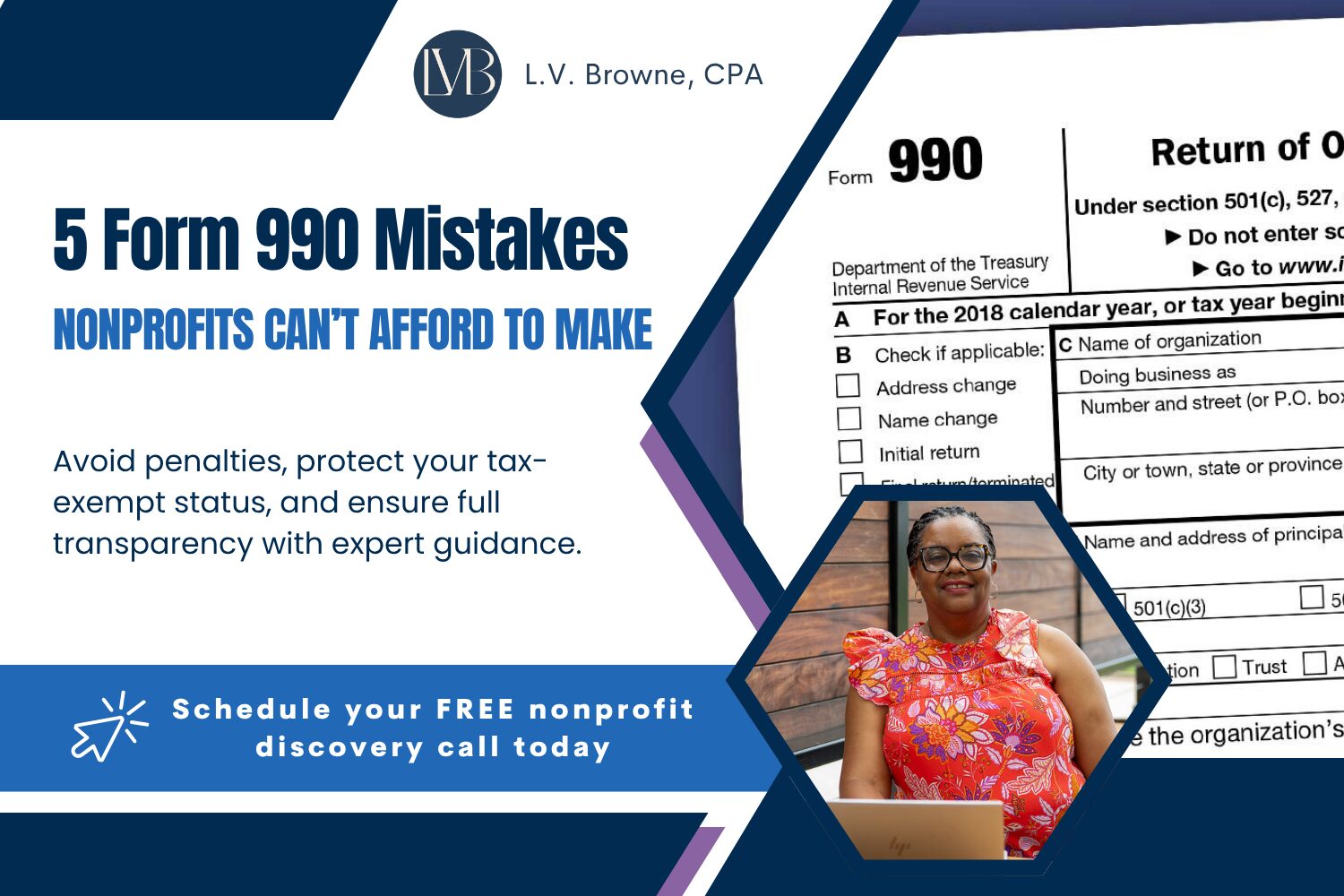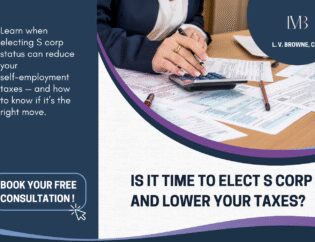
For many nonprofits, Form 990 is more than just a tax return. It’s a public-facing document that can impact funding, compliance, and your organization’s reputation. Yet despite its importance, Form 990 is often misunderstood or mishandled by well-meaning organizations.
Errors on this form can result in penalties, delays, donor distrust, or even loss of tax-exempt status.
Here are five of the most common mistakes nonprofits make when filing Form 990 — and how to avoid them.
1. Missing the Filing Deadline
The IRS requires most tax-exempt organizations to file Form 990 by the 15th day of the 5th month after the close of their fiscal year. Missing this deadline, especially repeatedly, can lead to automatic penalties. If you fail to file for three consecutive years, your tax-exempt status can be automatically revoked.
What to do: Mark filing deadlines on your organizational calendar, set reminders, and start preparing early. If you’re not ready, consider filing for an extension using Form 8868.
2. Incomplete or Inaccurate Disclosures
Form 990 is not just a financial report — it’s a transparency tool that requires organizations to present a full and accurate picture of their operations. The IRS expects disclosures on your mission, programs, finances, governance, leadership, board meetings, compensation, and key policies. Missing or misreporting any of these can raise red flags with the IRS, funders, or the public.
What to do: Review every section carefully. Make sure your mission and program accomplishments are clearly described, your financials align with your books, and all required governance details — such as compensation policies and board meeting frequency — are fully disclosed. Keep supporting documentation organized and ready to support the information you report.
3. Misreporting Contributions, Revenue, or Functional Expenses
Errors in reporting contributions or revenues — like misclassifying income or overlooking in-kind donations — are common and can undermine trust and compliance.
A related issue is failing to report functional expenses accurately. Nonprofits are required to allocate expenses across program services, management, and fundraising to provide transparency into how funds are used.
What to do: Maintain accurate financial records throughout the year. Use nonprofit-specific accounting software and ensure all transactions are properly categorized. Work closely with your bookkeeper or CPA to align your donor data and accounting records, and to allocate functional expenses correctly based on IRS guidelines.
4. Not Reviewing for Public Transparency
Form 990 is a public document, often accessed by grantmakers, journalists, watchdog organizations, and prospective donors. Submitting it without reviewing for readability and transparency can hurt your nonprofit’s image — even if all the numbers are correct.
What to do: Think of your Form 990 as both a compliance document and a public profile. Ensure your mission, programs, and leadership are described clearly and reflect your nonprofit’s impact.
5. Not Consulting with a CPA or Nonprofit Tax Expert
Many nonprofits rely on staff or volunteers to prepare Form 990, but without proper training or professional oversight, critical errors are more likely to happen, especially as your organization grows in complexity.
What to do: Partnering with an experienced CPA who understands nonprofit compliance can save your team time, reduce stress, and protect your organization from costly mistakes. Contact L V Browne, CPA
Schedule Your Free Nonprofit Discovery Call
Don’t Let Form 990 Mistakes Cost You!
At L.V. Browne, CPA, we help nonprofits like yours navigate Form 990 filing with clarity and confidence. We ensure your return is accurate, complete, and fully compliant — while also reflecting the best of what your organization stands for.
Schedule a free consultation today, and let’s take the stress out of tax season so you can stay focused on your mission.
Let us help you file with confidence and peace of mind.










